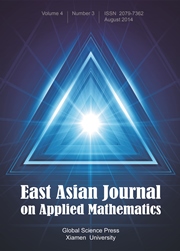Article contents
Modelling the Floating Ladder Track Response to a Moving Load by an Infinite Bernoulli-Euler Beam on Periodic Flexible Supports
Published online by Cambridge University Press: 28 May 2015
Abstract.
An infinite Bernoulli-Euler beam (representing the “combined rail” consisting of the rail and longitudinal sleeper) mounted on periodic flexible point supports (representing the railpads) has already proven to be a suitable mathematical model for the floating ladder track (FLT), to define its natural vibrations and its forced response due to a moving load. Adopting deliberately conservative parameters for the existing FLT design, we present further results for the response to a steadily (uniformly) moving load when the periodic supports are assumed to be elastic, and then introduce the mass and viscous damping of the periodic supports. Typical support damping significantly moderates the resulting steady deflexion at any load speed, and in particular substantially reduces the magnitude of the resonant response at the critical speed. The linear mathematical analysis is then extended to include the inertia of the load that otherwise moves uniformly along the beam, generating overstability at supercritical speeds – i.e. at load speeds notably above the critical speed predicted for the resonant response when the load inertia is neglected. Neither the resonance nor the overstability should prevent the safe implementation of the FLT design in modern high speed rail systems.
Keywords
- Type
- Research Article
- Information
- Copyright
- Copyright © Global-Science Press 2012
References
- 4
- Cited by


